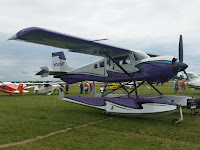On a side note: Murphy Aircraft feels the Moose is probably closer in operation to a Dehaviland Beaver. Okay, I have to say, that’s a selling point for the Moose right there. Who hasn’t wanted a Dehaviland Beaver? I may be a Cessna fan but a round engine aircraft on Amphibs…
Category Archives: aircraft training
Proficiency training Simulator or aircraft?
I’m a big believer in the FAA Wings programs and flight simulators to keep a pilot proficient. If the weather is really bad or your checkbook is a little empty, flying with a Flight Simulator program on your home computer can be a great help. While it might not be logging “real” hours, it can sure help keep your mind in the flying mood. The Flight Sim program can overlay weather, set up approaches and do almost everything a pilot need s to do to feel comfortable in their aircraft. Flying to a new destination? Set up the Flight Sim program to fly into the area, make a few approaches and you’ll feel like you been there before when you get there for the first time.
Question from a reader – Should I buy an aircraft to learn to fly.
I enjoy reading your articles; they are always informative and entertaining.
I would appreciate any information you might provide in response to my question,


